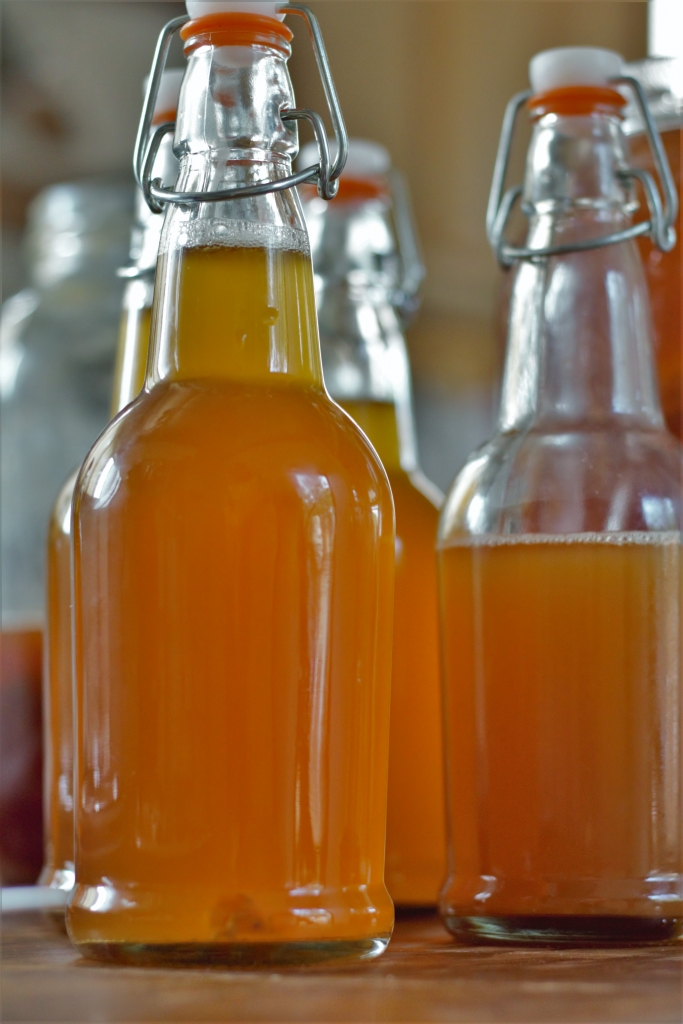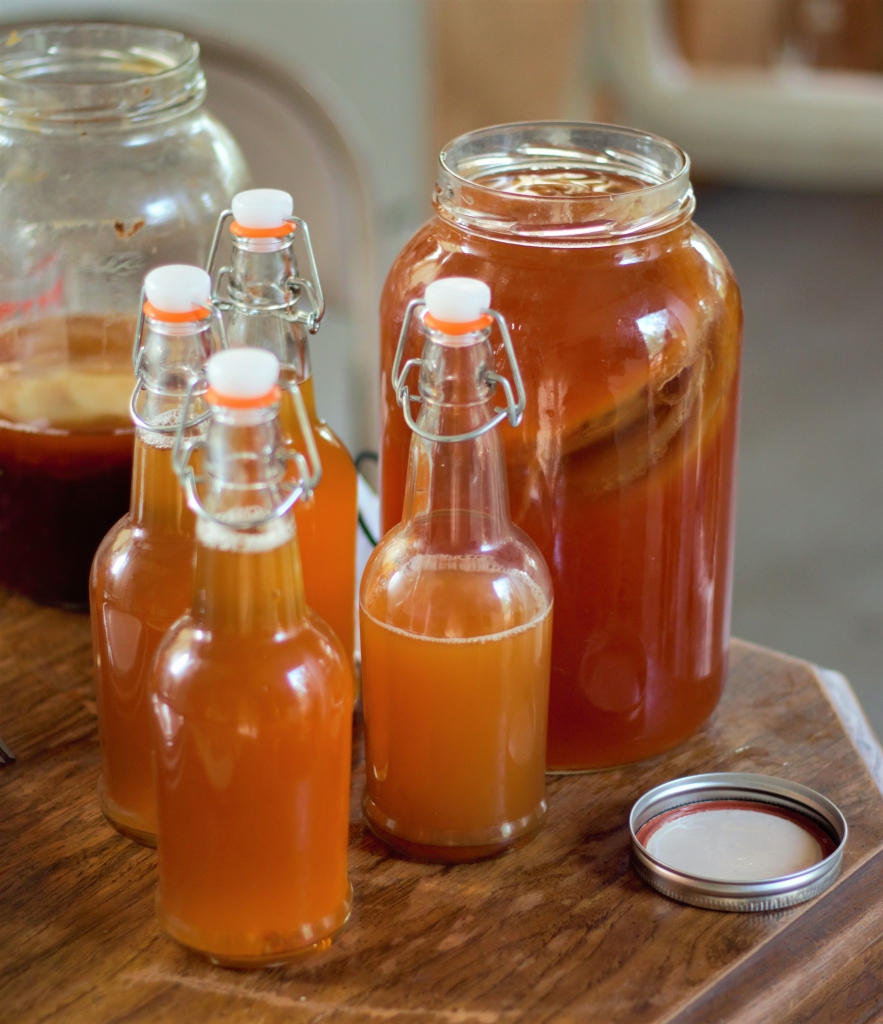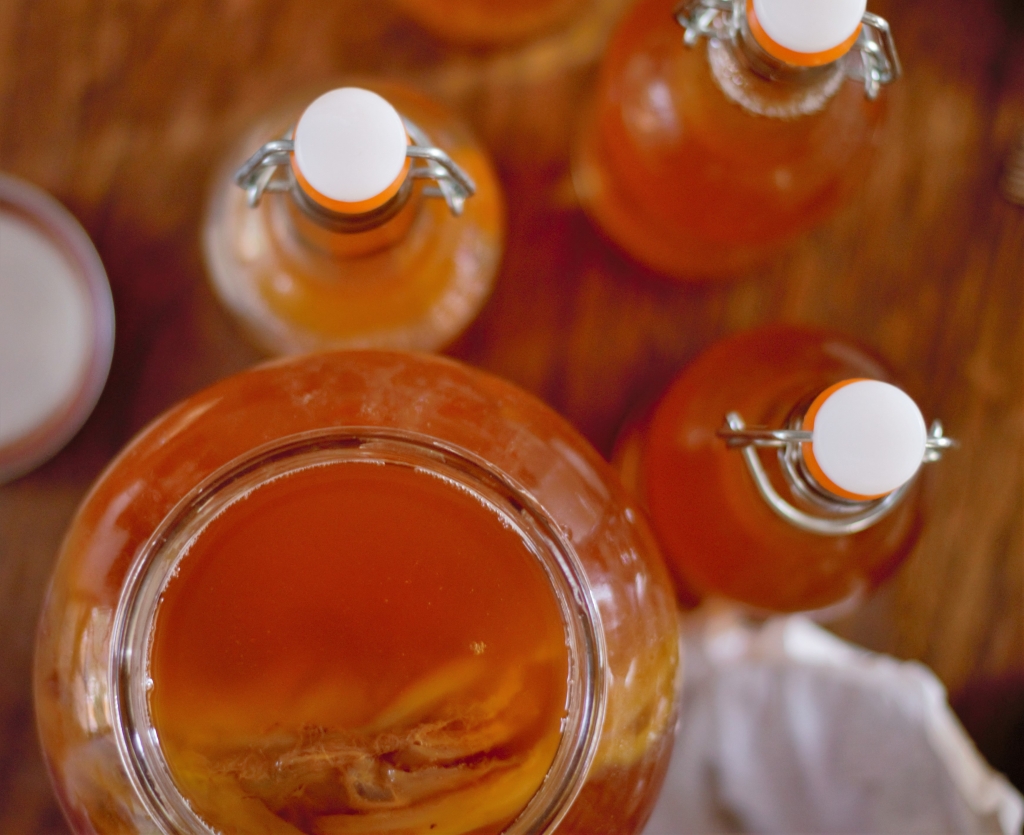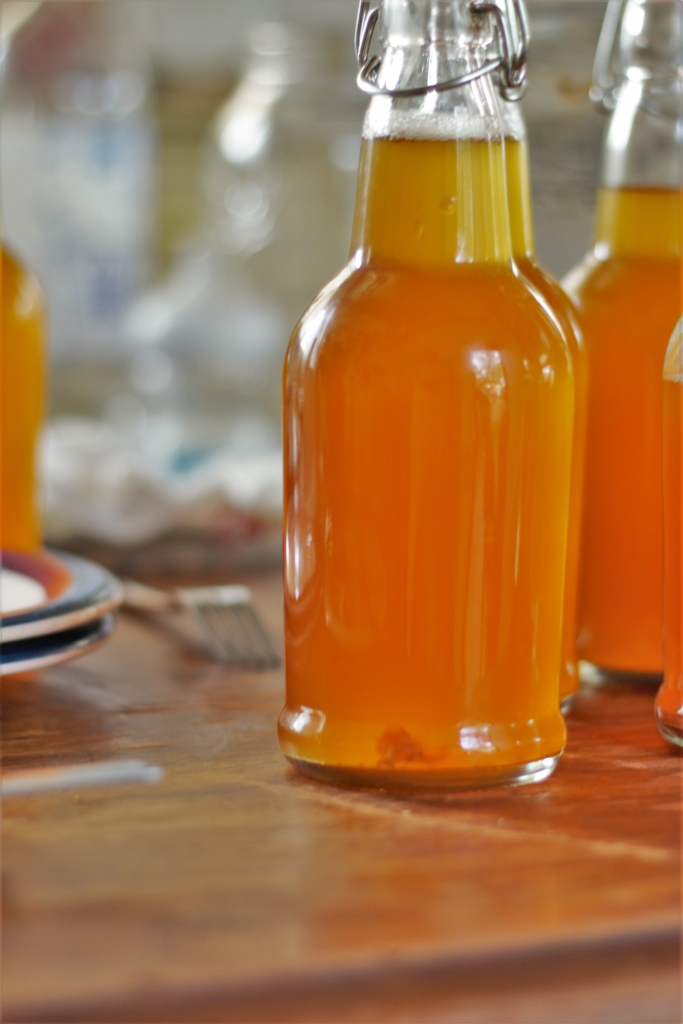Two Tips for Carbonated Plain Kombucha

Last week Stewart grabbed a freshly bottled kombucha and said it was good even though it wasn’t carbonated. It hadn’t built up carbonation yet because I had just bottled it less than 24 hours prior. Carbonation is the result of carbon dioxide building up as a byproduct of the fermentation process and that requires three things, one of which is time. That got me thinking about tips for carbonated kombucha.

Besides time, sugar is another critical element of carbonation. If you are bottling kombucha plain – with no added fruit, juice, or sugar – you need to bottle it while it is still sweet in order to achieve a good carbonation. I generally taste my kombucha to see if the brewing time is complete and like to bottle it just as it turns the corner for sweet to sweet and tangy. (I also have a theory on all ferments that there is a window at which these guys are the most alive and therefore the most beneficial to the body. This applies to kombucha, milk kefir, vegetables, etc. and that window is after they are fully inoculated but before they get overly tangy. But that’s just my theory.)
Even after you remove kombucha from the SCOBY it continues to ferment due to the inoculation of bacteria and yeasts. These will feed on the sugar remaining in the kombucha to create carbonation during the second, bottled, fermentation.

The final tip I have for you is to make an effort to get a bit of the yeast dregs from the bottom of the fermentation vessel into the bottles themselves. Not everyone likes the texture of these but a little goes a long way and they pretty much sink to the bottom and go unnoticed. You can see a bit of the yeast floating in the bottom of the bottle pictured below. 
The yeasts play an important role in creating plenty of carbon dioxide for an active, bubbly second fermentation.
So those are my tips for a crisp, bubbly plain kombucha that will cost you pennies on the dollar when compared to the store-bought counterpart. Happy brewing!

I adore kombucha! Thanks for all of your lovely posts. The recent pic of your husband holding the worried child is one for the ages, just beautiful.
If I add sugar or harvest it while it is still a little sweet and bottle it for carbonated Kombucha, then the sugar will help with the carbonation but does that mean that the sugar content will get smaller the more it carbonates? Does the sugar turn into nothing and after it ferments the sugar that I added, will I end up consuming it or does it dissappear? Like even if I add fruit juice and the sugar in the juice will help with making it bubbly but will my sugar content be higher then if I wouldn’t add the juice? I hope my question makes sence?
Natalya,
Yes, as the probiotics feast on the sugar, carbonation increases and the sugar content (and sweetness in flavor) decreases. You will notice, if you taste it every day or two after bottling, that it gets less and less sweet. That’s because the sugars (whether fruit or cane sugar) are being consumed by the beneficial bacteria in order to multiply themselves, create organic acids, and give off carbonation.
Does that help?
Hi Shannon,
How much sugar should I put for 1 litre/ 33 fl. ounces/ 4 cups of Kombucha ?
Is 1 teaspoon enough ?
Thank you & have a nice day !
After the fermentation process, to make the kombucha bubbly 🙂